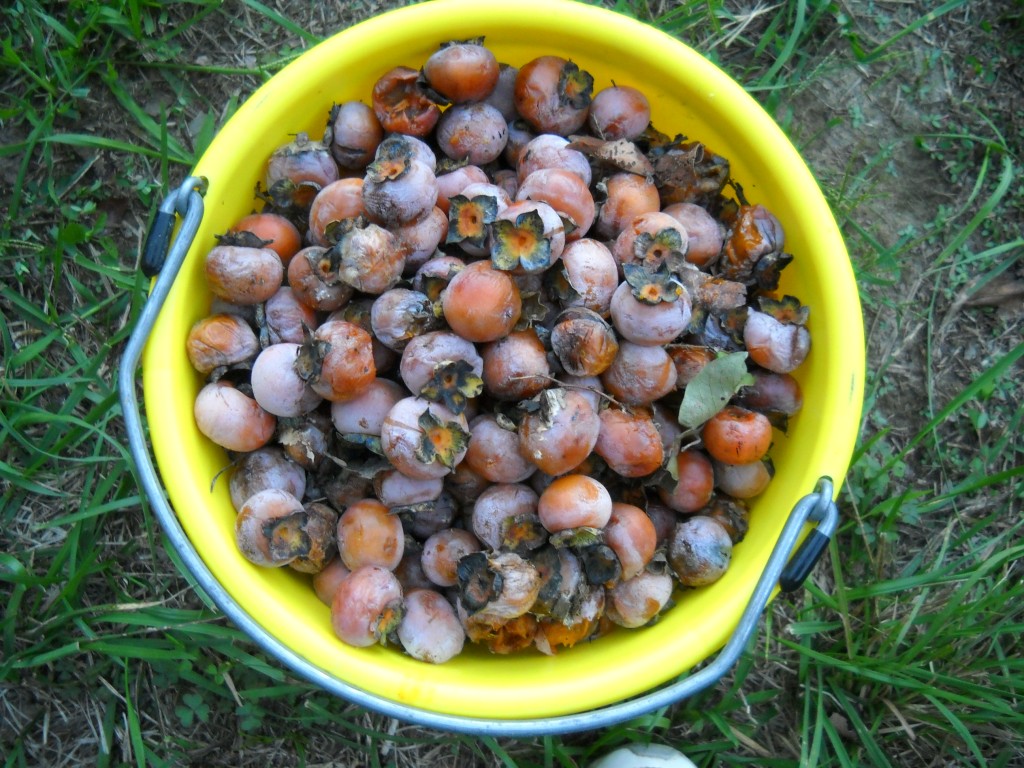Persimmons pose threat for all horses, not just those with laminitis
One of my horses got an abscess in September 2012, and it turned out to be a stroke of good luck for a change.
Thanks to the abscess, the horses were confined to the two upper pastures.
This was Robin’s first abscess. I closed the gate to the lower fields to keep Kurt from getting too far away from Robin, who couldn’t put any weight on the sore foot but was still trying to follow Kurt around. It seemed like a temporary inconvenience to Kurt, but he would live. Little did I know that it probably saved both horses’ lives.
One night after work, I took my stray cats for a walk around my lower fields and noticed some persimmons on the ground. I have two persimmon trees that I have to keep an eye on every fall.

A bucket this size holds about 550 persimmons, a lethal amount for a horse to consume.
In 2011, I didn’t remember seeing any persimmons, and I made no notes on the topic in my horse journal.
I guess we made up for it in 2012.
On this night, the ground was blanketed with persimmons. By the time I finished trying to pick them all up, I had gathered three buckets’ full, and it was dark.
In less than a week, I picked up 4,140 persimmons.
A persimmon with a diameter of 2 1/2 inches has 118 calories. Most of mine are 1 1/2 inches in diameter, or three-fifths of that size, so the calorie count would be more along the lines of 71 calories per persimmon.
And the average persimmon has 10.6 grams of fructan, so these would be closer to 6.36 grams. Excess fructan in significant amounts can induce laminitis in a horse.
All totaled, these collected persimmons represent an estimated 293,940 calories and 26,330 grams of fructan.
A horse out of work should have no more than maybe 15,000 calories a day.
In April 2010, Equine Science Update reported on a presentation by Dr. Teresa Hollands at the Laminitis Awareness 2010 seminar in which she described how much fructan it takes to induce laminitis.
Hollands, a nutritionist at Dodson and Horrell, said the amount was 5 grams to 12.5 grams of fructan per kilogram of bodyweight, or about 3.75 kilograms of fructan for a 500-kilogram (1,100-pound) horse. The 26,330 grams of persimmon fructan that I collected would equal 26 kilograms, a tad above the 3.7 kilograms needed to induce laminitis.
Beyond my concerns for the horses developing laminitis, there’s the little problem of impaction.
An online search turns up plenty of entries for persimmon and acorn impactions in horses.
Basically, horses will eat persimmons until they die.
I was expecting not to worry about the persimmon trees in 2012 because of the drought. Low and behold, persimmon trees can be quite drought resistant, according to several sources.